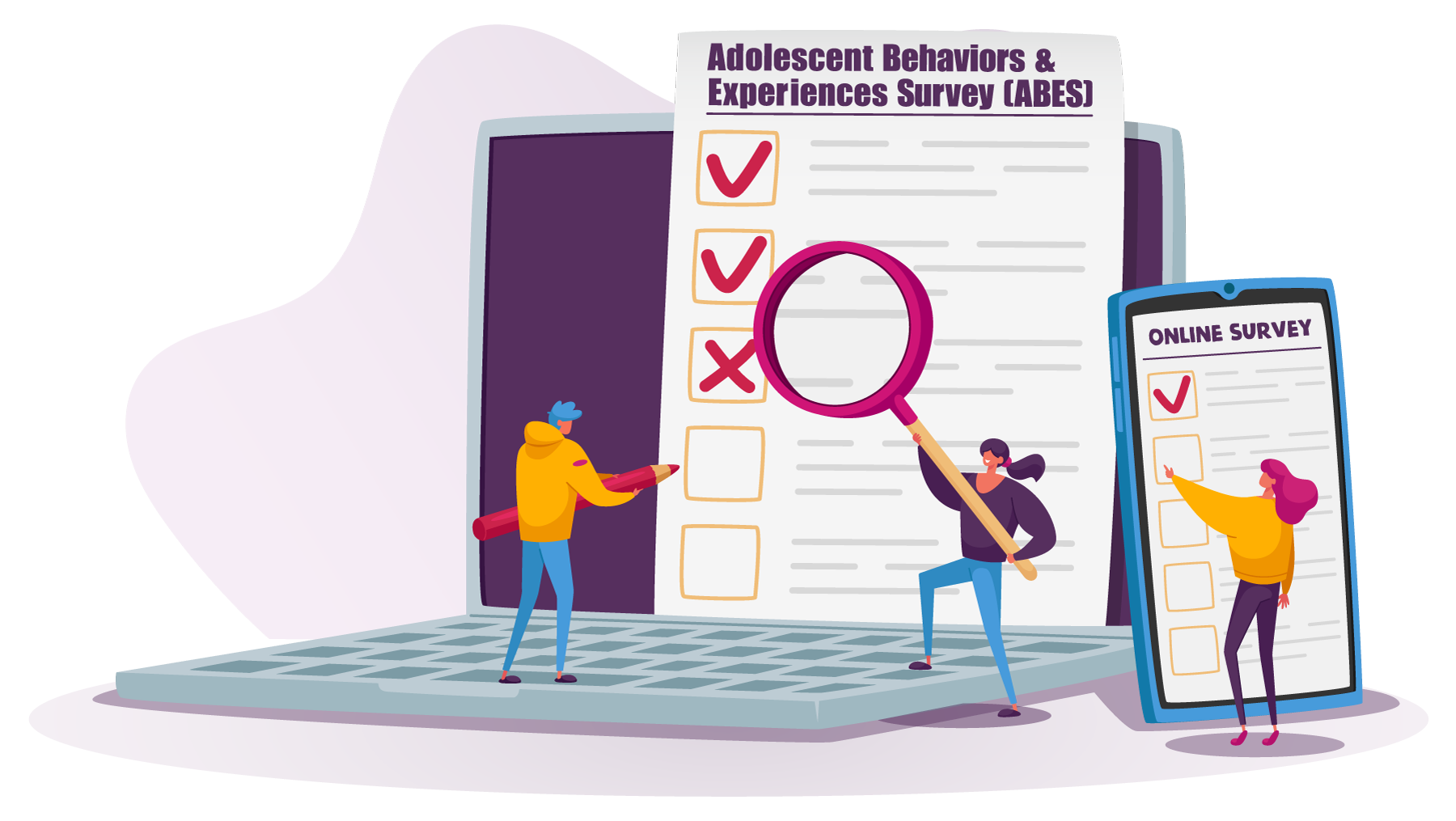At a glance
- The Adolescent Behaviors and Experiences Survey (ABES) was a one-time survey conducted in 2021.
- The survey highlighted the magnitude of the challenges our nation’s youth faced during the COVID-19 pandemic.

Background
The COVID-19 pandemic has had a seismic effect on communities nationwide. And young people have been especially affected by the ways in which their everyday lives were altered. The disruptions were widespread—school buildings closed, connecting with peers was limited, communities were dealing with loss and upheaval.
While the pandemic has affected all students, the disruption and adversity have not affected all students equally.
ABES findings
- More than 1 in 3 high school students experienced poor mental health during the pandemic.
- Nearly half of students felt persistently sad or hopeless.
- Female students and those who identify as lesbian, gay, bisexual, other, queer or questioning (LGBQ) are experiencing higher levels of poor mental health and suicide-related behaviors.
- For example, in 2021, 12% of female students, more than 25% of LGB students, and 17% of other or questioning students attempted suicide during the past year. This compared to 5% of their male peers and 5% of their heterosexual peers, respectively.
- The range of effects on youth's daily lives was broad—including difficulties, family economics, hunger, and abuse in the home.
- More than half of students experienced emotional abuse in the home and more than 10% reported physical abuse in the home.
- LGB students were far more likely to report physical abuse. Twenty percent reported being physically abused by a parent or other adult in their home, compared to 10% of heterosexual students.
- Black students were most likely to report hunger. Nearly one-third reported that there was not enough food in their home during the pandemic.
- More than one-third of U.S. high school students felt they had been treated badly or unfairly at school because of their race or ethnicity.
- Asian, Black, and multiracial students reported the highest levels of reporting racism.
- Students who reported racism were also more likely to experience poor mental health and less likely to feel connected to people at school.
What can be done
The ABES data showed that youth who felt more connected to people at their schools had better mental health. However, young people who experienced racism were less likely to benefit from this protection.
More must be done to ensure that schools provide a safe, supportive environment, so students feel connected to people who care. In this way, all students can fully benefit from the protections that connectedness provides.
Schools serve as a critical venue to provide support. The CDC “What Works in Schools” approach to primary prevention in local school districts:
- Improves health education.
- Connects youth to the services they need.
- Creates safer and more supportive school environments.
In schools that implement this approach, data show positive effects on substance use, sexual risk, and experience of violence among students.
About ABES
The Adolescent Behaviors and Experiences Survey (ABES) was a one-time survey.

It was funded through the Coronavirus Aid, Relief, and Economic Security (CARES) Act. Findings are detailed in five articles in the Morbidity and Mortality Weekly Report (MMWR) Surveillance Supplement.
ABES was a 110-question online survey completed by U.S. high school students in early to mid 2021. ABES found that the COVID-19 pandemic affected youth in a number of areas.
